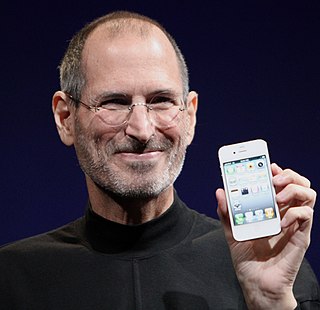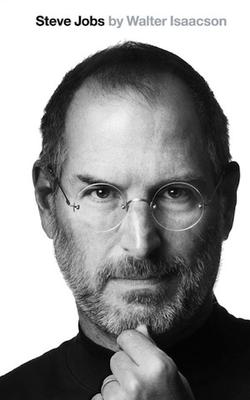Related Research Articles

Stephen Gary Wozniak, also known by his nickname "Woz", is an American technology entrepreneur, electronics engineer, computer scientist, computer programmer, philanthropist, and inventor. In 1976, he co-founded Apple Computer with his late business partner Steve Jobs, which later became the world's largest technology company by revenue and the largest company in the world by market capitalization. Through his work at Apple in the 1970s and 1980s, he is widely recognized as one of the most prominent pioneers of the personal computer revolution.

Jef Raskin was an American human–computer interface expert who conceived and initiated the Macintosh project at Apple in the late 1970s.

Andrew Jay Hertzfeld is an American software engineer and innovator who was a member of the original Apple Macintosh development team during the 1980s. After buying an Apple II in January 1978, he went to work for Apple Computer from August 1979 until March 1984, where he was a designer for the Macintosh system software. Since leaving Apple, he has co-founded three companies: Radius in 1986, General Magic in 1990, and Eazel in 1999. In 2002, he helped Mitch Kapor promote open source software with the Open Source Applications Foundation. Hertzfeld worked at Google from 2005 to 2013, where in 2011, he was the key designer of the Circles user interface in Google+.

The Apple Macintosh—later rebranded as the Macintosh 128K—is the original Apple Macintosh personal computer. It played a pivotal role in establishing desktop publishing as a general office function. The motherboard, a 9 in (23 cm) CRT monitor, and a floppy drive were housed in a beige case with integrated carrying handle; it came with a keyboard and single-button mouse. It sold for US$2,495. The Macintosh was introduced by a television commercial entitled "1984" shown during Super Bowl XVIII on January 22, 1984 and directed by Ridley Scott. Sales of the Macintosh were strong at its initial release on January 24, 1984, and reached 70,000 units on May 3, 1984. Upon the release of its successor, the Macintosh 512K, it was rebranded as the Macintosh 128K. The computer's model number was M0001.
Burrell Carver Smith is a retired American computer engineer who, while working at Apple Computer, designed the motherboard for the original Macintosh. He was Apple employee #282, and was hired in February 1979, initially as an Apple II service technician. He also designed the motherboard for Apple's LaserWriter.
Michael "Scotty" Scott is an American entrepreneur, who was the first CEO of Apple Computer from February 1977 to March 1981. Formerly director of manufacturing at National Semiconductor, Scott was persuaded by Mike Markkula to take the CEO position at Apple, as the co-founders — Steve Jobs and Steve Wozniak — were both seen as insufficiently experienced for the job at the time.

Sir Michael Jonathan Moritz is a Welsh-born American billionaire venture capitalist, philanthropist, author, and former journalist. Moritz works for Sequoia Capital, wrote the first history of Apple Inc., The Little Kingdom, and authored Going for Broke: Lee Iacocca's Battle to Save Chrysler. Previously, Moritz was a staff writer at Time magazine and a member of the board of directors of Google. He studied at the University of Oxford and the Wharton School of the University of Pennsylvania and went on to found Technologic Partners before becoming a venture capitalist in the 1980s. Moritz was named as the No. 1 venture capitalist on the Forbes Midas List in 2006 and 2007.
The Command key, ⌘, formerly also known as the Apple key or open Apple key, is a modifier key present on Apple keyboards. The Command key's purpose is to allow the user to enter keyboard commands in applications and in the system. An "extended" Macintosh keyboard—the most common type—has two command keys, one on each side of the space bar; some compact keyboards have one only on the left.
Guy L. "Bud" Tribble was Vice President of Software Technology at Apple Inc.
Steve Capps is a pioneering American computer programmer and software engineer, who was one of the original designers of the Apple Macintosh computer and co-designers of the Finder in the 1980s. He also led development of the Apple Newton PDA and designed music software such as SoundEdit, before developing user interface (UI) designs for Microsoft's Internet Explorer and online/mobile payment systems.
iCon: Steve Jobs, The Greatest Second Act in the History of Business is an unauthorized biography by Jeffrey S. Young and William L. Simon about the return of Steve Jobs to Apple Inc. in 1997. It was published in 2005.

Apple Inc., originally named Apple Computer, Inc., is a multinational corporation that creates and markets consumer electronics and attendant computer software, and is a digital distributor of media content. Apple's core product lines are the iPhone smartphone, iPad tablet computer, and the Macintosh personal computer. The company offers its products online and has a chain of retail stores known as Apple Stores. Founders Steve Jobs, Steve Wozniak, and Ronald Wayne created Apple Computer Co. on April 1, 1976, to market Wozniak's Apple I desktop computer, and Jobs and Wozniak incorporated the company on January 3, 1977, in Cupertino, California.
Joanna Karine Hoffman is a Polish-American marketing executive. She was one of the original members of both the Apple Macintosh team and the NeXT team. At the time she began at Apple Computer, the Mac was "still a research project". Her position "constituted the entire Macintosh marketing team for the first year and a half of the project", which included Product Marketing collaboration on the Mac product design itself. She also wrote the "first draft of the Macintosh User Interface Guidelines". Hoffman would eventually run the International Marketing Team which brought the Mac to Europe and Asia.

Steven Paul Jobs was an American business magnate, inventor, and investor. He was the co-founder, chairman, and CEO of Apple; the chairman and majority shareholder of Pixar; a member of The Walt Disney Company's board of directors following its acquisition of Pixar; and the founder, chairman, and CEO of NeXT. He was a pioneer of the personal computer revolution of the 1970s and 1980s, along with his early business partner and fellow Apple co-founder Steve Wozniak.
RDF may refer to:
Macintosh Basic, or MacBASIC, was both a comprehensive programming language and a fully interactive development environment designed by Apple Computer for the original Macintosh computer. It was developed by original Macintosh team member Donn Denman, with help from fellow Apple programmers Marianne Hsiung, Larry Kenyon, and Bryan Stearns, as part of the original Macintosh development effort starting in late 1981. Andy Hertzfeld said, "A BASIC interpreter would be important, to allow users to write their own programs. We decided we should write it ourselves, instead of relying on a third party, because it was important for the BASIC programs to be able to take advantage of the Macintosh UI, and we didn't trust a third party to 'get it' enough to do it right."

Steve Jobs is the authorized self-titled biography of American business magnate and Apple co-founder Steve Jobs. The book was written at the request of Jobs by Walter Isaacson, a former executive at CNN and TIME who had previously written best-selling biographies of Benjamin Franklin and Albert Einstein.

Revolution in the Valley: The Insanely Great Story of How the Mac Was Made is a nonfiction book written by Andy Hertzfeld about the birth of the Apple Macintosh personal computer. The author was a core member of the team that built the Macintosh system software and the chief creator of the Mac's radical new user interface software. The book is a collection of anecdotes tracing the development of the Macintosh from a secret project in 1979 through its "triumphant introduction" in 1984. These anecdotes were originally published on the author's Folklore.org web site.
Robert L. Belleville is an American computer engineer who was an early head of engineering at Apple from 1982 until 1985.
References
- 1 2 3 Hertzfeld, Andy (February 1981). "Reality Distortion Field". Folklore.org.
- ↑ Dudrow, Andrea (October 16, 2000). "Notes from the Epicenter: Exploring the Reality Distortion Field". CreativePro.
- ↑ "RIM Responds to Apple's 'Distortion Field'". Inside BlackBerry. October 19, 2010. Archived from the original on October 20, 2010. Retrieved December 11, 2010.
- ↑ "Folklore.org: Saving Lives". www.folklore.org. August 1983. Retrieved 2021-08-06.
- ↑ Isaacson, Walter (2012-04-01). "The Real Leadership Lessons of Steve Jobs". Harvard Business Review. ISSN 0017-8012 . Retrieved 2021-08-31.
- ↑ Clare Duffy (8 July 2019). "CNN Exclusive: Bill Gates calls Steve Jobs a 'wizard' who saved Apple". CNN. Retrieved 2021-08-12.
- ↑ Grothaus, Michael (2019-07-08). "Bill Gates thinks Steve Jobs was a wizard". Fast Company. Retrieved 2021-08-12.
- ↑ "The Ajax Reality Distortion Field". davidtemkin.com. April 12, 2005. Archived from the original on June 18, 2010.
- ↑ Ferriss, Tim (November 21, 2010). "How It Works: Clinton's "Reality Distortion Field" Charisma".
- ↑ Darrach, Brad (1972-08-11). "Bobby is Not a Nasty Kid". Life. p. 40. Retrieved March 25, 2013.
- ↑ O'Brien, Timothy L. (2016-06-16). "A Peek Inside Trump's Smoke and Mirrors Tour". Bloomberg View. Retrieved 2016-07-29.
- ↑ Richard Waters. Elon Musk, billionaire tech idealist and space entrepreneur. Financial Times .
- ↑ Wiedeman, Reeves (2020). Billion Dollar Loser: The Epic Rise and Spectacular Fall of Adam Neumann and WeWork (First ed.). New York. ISBN 978-0-316-46136-8. OCLC 1175677200.
{{cite book}}: CS1 maint: location missing publisher (link) - ↑ "Dilbert comic strip for 2010-09-23". The official Dilbert comic strips archive.
- ↑ Makabenta, Yen. "Duterte has his own 'reality distortion field'" . Retrieved 2020-11-29.
